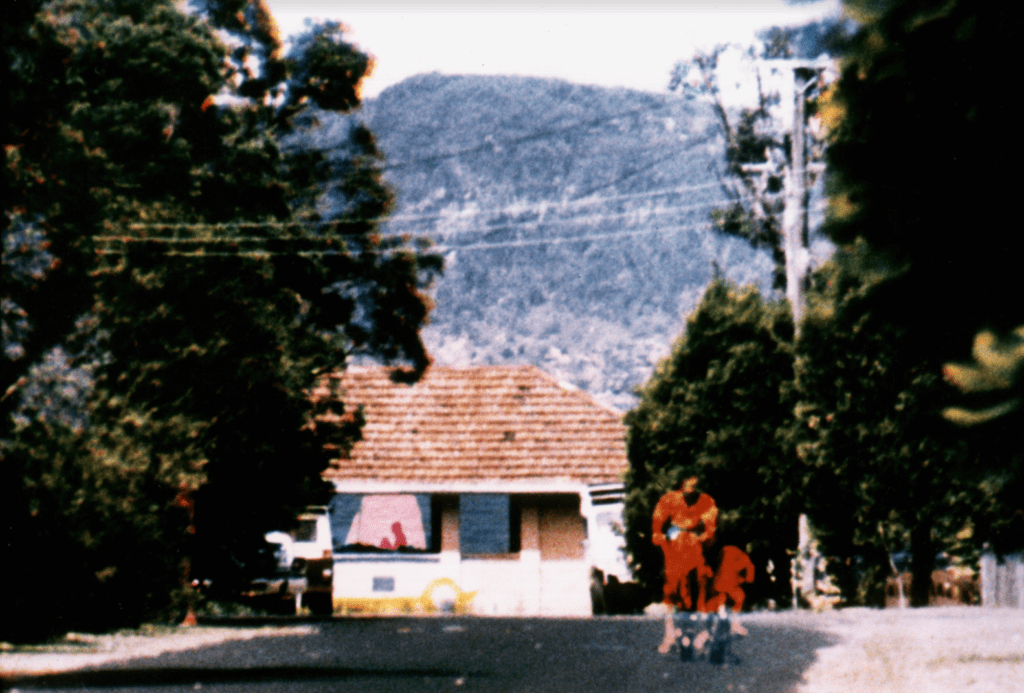
Among the many gems brought to us by Arsenal’s carte blanche through Angelika Ramlow, there are two films by the Australian filmmaker duo Corinne and Arthur Cantrill (whose work has also been recovered and restored by Arsenal). They are Notes on the Passage of Time (1979) and Waterfall (1984), made with their particular technique of working with color.
Three-colour separation is a technique based on the early experiments in colour photography, which used the separation of the three primary colours, filming three strips of black and white film through coloured filters, which are then projected after being turned positive through those same colour filters, overlaying the three images. This usage stems from dissatisfaction with the colours of the emulsions of reversible films manufactured in the 70s. So, the Cantrills are recovering the experiments by the English scientist James Maxwell in 1861, a technique that allows multiple variations with colour, but applied to cinema. With this technique they made a series of still lifes, portraits and landscape films. The results were very exciting, as they explain: “We often saw a tenacious illusion of three-dimensionality, perhaps due to the actuance and slight vibration seen in the objects’ contours.” The amazing effects of the technique on the Australian landscape are also progressively revealed: “Any movement in the field, such as birds flying, appeared in magenta, cyan or yellow, depending on the separation in which it occurred. It becomes especially dramatic in the area of sky above the image where large movements of clouds occur between shots, as in one shot at Corroboree Rock (Central Australia), where the rock appears strangely compact and cleaved from the sky”.
That gave rise to a wide range of creative possibilities: “Throughout our recent trials, we’ve manipulated the colours a little. They were modified, for example, by making the red band go through the green reel and vice versa, mixing the films with each other. This led to very promising chromatic results, where a blue sky could thus suddenly take on an unreal pink tint. The work of separation coincided with our wish to return to a series of static studies—landscapes and still lifes. We recall Cocteau’s words when he said that you feel the flow of time in a movie shot that shows a static object, whereas you don’t feel it when you project a slide showing the same thing. Overlaying three shots of the same subject, the “flow of time” is tripled: it is interesting to see to what extent it appears in some shots (and even in some details within the shot) but not in others. In a still life, a plum slowly rots in the warm light, so that an accent of light moving across the shot was revealed on the copy, adjusting the colours of the spectrum in its movements.”
Below, you can see some notes from the Cantrills about the two films in question:
Notes on the Passage of Time (1979): “More than in any other study on three-colour separation to date, in this one we worked with the theme of the title. We shot the same scene several times on the same day: a telephoto view of Amethyst Avenue, Pearl Beach, where there is a hut with big windows reflecting the sea in the background, from early morning to late evening. Pedestrians, cyclists and cars pass through the space of the street, while boats can be glimpsed in the water. There is a sense of the ephemeral nature of human activities in translating the transparent and coloured moving subjects, while the inanimate subjects (the hut, the road, the distant hill) have a quality of permanence. In addition to the daily passing of time, there is the passing of the seasons, since the first part of the film was shot in early winter, whereas the second part was shot in mid-summer. The change in the angles and colour of the sunlight is evident. In fact, there are three steps of time: the one of each set of colour separations, the one of the day progressing and the one of the seasons.”
Waterfall (1984): “Waterfall began with the notion that in some 19th century landscape photography—especially that of Eadweard Muybridge—images of waterfalls were studies of time. The slow shutter speed ensured that the photograph did not represent the water, but the passage of time, or rather the volume of space it took up during the exposure. In this three-colour separation film, the three overlaid images of moving water are combined into one solid, white, undifferentiated volume, surrounded by coloured activity arising from variations in the flow of patterns. To enhance the effect, we slowed down the shutter speed to one exposure per frame; the water becomes a deliberately vague flurry of material that appears to be rising as well as falling. References to photographic tradition continue in the colour surrounding the landscape: it is covered in washes of color caused by the shadows of the clouds as they move differently across the separations, evoking the early trials in colour photography and the results of tint and tones. The soundtrack is a mix of three different waterfall effects, modified differently with a graphic equalizer, with small shifts in the frequency spectrum, anticipating changes in the image. It was composed in one take and in real time for the film. Filming took place at MacKenzie’s Waterfall in The Grampians, Western Victoria.”





